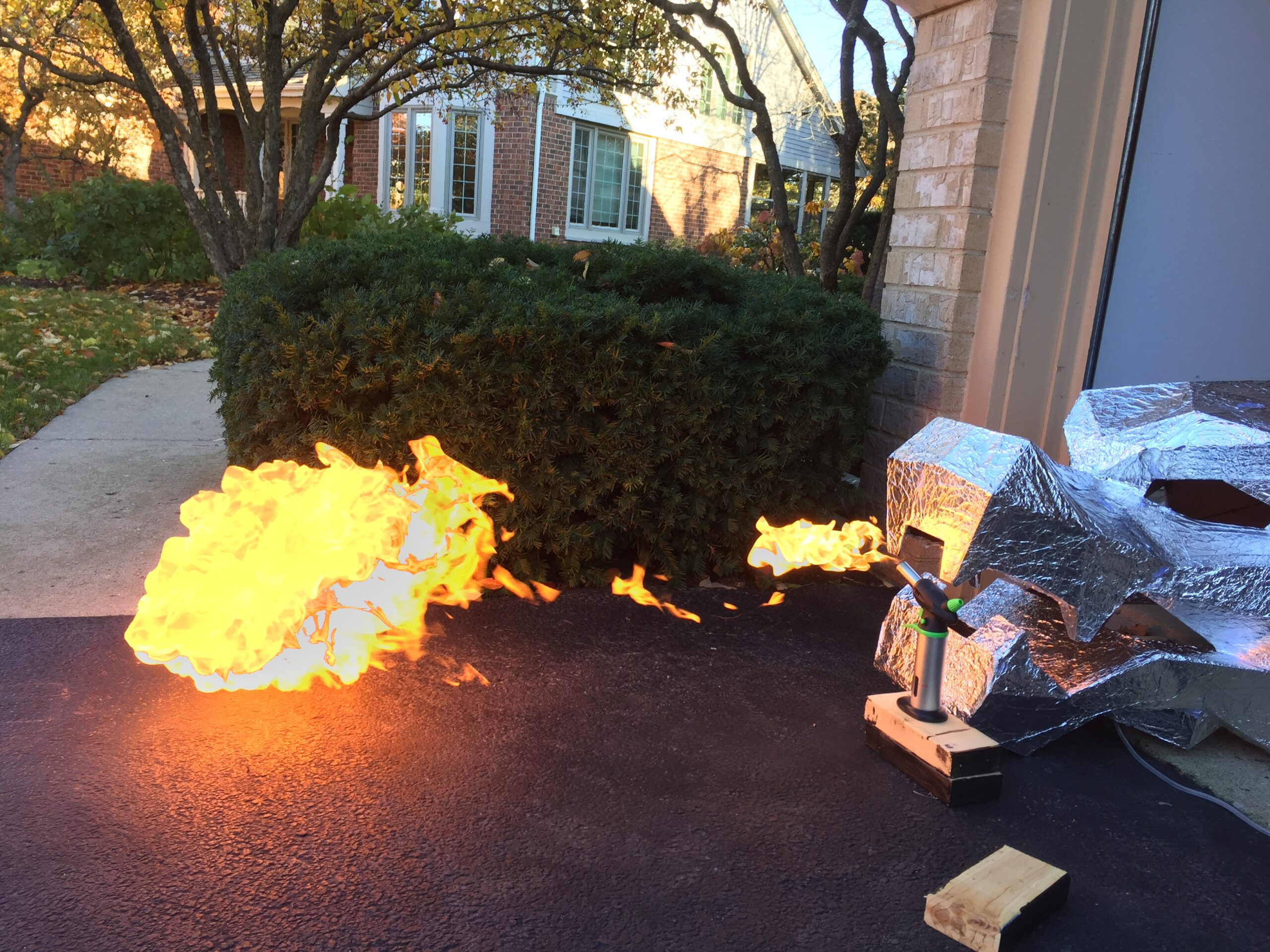Upon looking at the portfolio, it may seem obvious that I had already built a fire breathing dragon a couple years back. This post is about a new version that I had finished for Halloween. For the design of the head, I went with the Dragon Mask design from Wintercroft. The pieces were then blown up to produce a larger dragon head. All 126 individual panels were then laser cut out of ⅛” plywood. Following the numbering system and design specifications, the panels were then pieced together using hot glue, as it bonds very well with plywood. The whole dragon was then covered in aluminum foil, providing it with a very shiny finish, and also acting as a fire retardant. For the fire, a propane tank was connected to vinyl tubing with a solenoid valve allowing for remote control. A small lighter was positioned in front of the tubing near the mouth, producing a large flame when the propane would pass over the lighter. Because of the aluminum foil encasing the entire head, it acted as a heat sync in case the fire got too close to the structure, and didn’t throw the flame outwards. Linked below are a few pictures of it “firing”. Enjoy!
